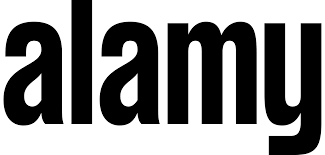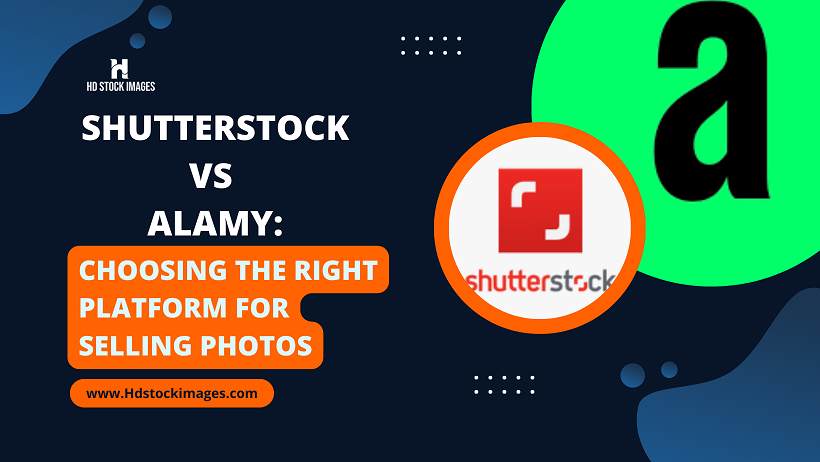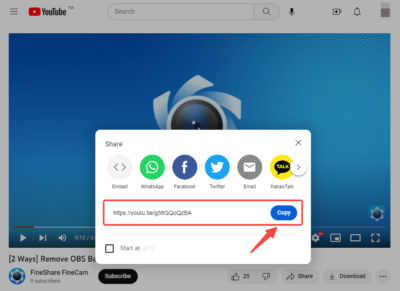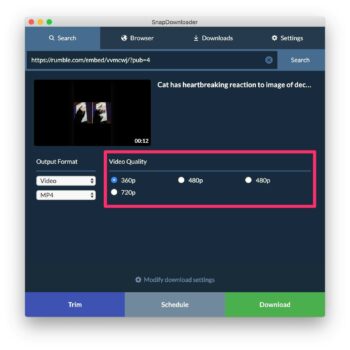I. Introduction
Selling photos online has become an increasingly popular way for photographers to monetize their craft. With the rise of digital platforms, photographers now have a wide range of options to choose from when it comes to selling their images. Among the many platforms available, Shutterstock and Alamy have emerged as two of the leading players in the market. However, deciding which platform to use can be a challenging task for photographers looking to maximize their sales and exposure.
In this blog post, we will delve into the comparison between Shutterstock and Alamy, helping photographers make an informed decision about which platform is the right fit for them. We will explore the features, benefits, considerations, and potential drawbacks of both platforms, considering factors such as customer base, submission process, pricing, royalty rates, exclusivity requirements, and marketing efforts.
Also Read This: Bandcamp to MP3 Tool – Uncover an Easy Guide for Epic Downloads
2. Overview of Shutterstock

Shutterstock is one of the most well-known and widely used platforms for selling photos online. With a history spanning over 17 years, it has established itself as a reputable and trusted platform in the industry. Here is an overview of Shutterstock, including its features, benefits, and potential drawbacks for photographers.
A. History and reputation:
Shutterstock was founded in 2003 by Jon Oringer and has since grown into a global marketplace with millions of users. It has gained a strong reputation for its extensive collection of high-quality images, videos, and music tracks. Its longevity and market presence make it a popular choice among photographers.
B. Features and benefits for photographers:
Extensive customer base and global reach:
Shutterstock boasts a vast customer base, including individuals, businesses, and creative professionals worldwide. This broad reach increases the potential exposure and sales opportunities for photographers.
Easy submission process and image requirements:
Shutterstock offers a straightforward submission process, allowing photographers to upload their images efficiently. The platform provides clear guidelines and requirements, ensuring that submitted content meets their quality standards.
Strong marketing and promotion:
Shutterstock invests heavily in marketing and promotion to attract customers and drive sales. Its robust marketing strategies, including targeted advertising and partnerships, help photographers gain visibility and increase their chances of selling their photos.
Competitive pricing and royalty rates:
Shutterstock offers competitive pricing options for customers, which can attract a wide range of buyers. For photographers, the platform provides royalty rates that vary based on their sales volume and contributor level, allowing them to earn a percentage of each sale.
C. Considerations and potential drawbacks:
High competition and saturation:
As one of the largest stock photo platforms, Shutterstock has a significant number of contributors. This high level of competition can make it challenging for individual photographers to stand out and generate consistent sales.
Strict content acceptance criteria:
Shutterstock has rigorous content acceptance criteria, ensuring that only high-quality and commercially viable images are included in their collection. Photographers must carefully review and comply with these guidelines to have their photos accepted.
Exclusivity requirements:
Shutterstock offers an optional exclusivity program, where photographers can earn higher royalty rates by exclusively selling their photos on the platform. However, this exclusivity commitment may limit photographers' ability to sell their images on other platforms.
Shutterstock has undoubtedly established itself as a prominent platform in the stock photography industry, offering photographers a range of features and benefits. However, it is essential to weigh these advantages against the potential drawbacks and consider individual goals and preferences before committing to the platform.
Also Read This: Learn How to Free Download Shutterstock Images With These Easy Steps
3. Overview of Alamy

Alamy is another notable platform for photographers looking to sell their photos online. While not as widely recognized as Shutterstock, Alamy has its unique features and advantages. Let's delve into an overview of Alamy, including its history, reputation, features, benefits, and potential drawbacks for photographers.
A. History and reputation:
Alamy was founded in 1999 and has since grown to become a reputable platform known for its extensive collection of images, including both commercial and editorial content. Over the years, Alamy has built a strong reputation for its diverse range of high-quality photos.
B. Features and benefits for photographers:
Broad editorial and commercial reach:
Alamy has a wide customer base that includes media organizations, publishers, and businesses. It has a strong focus on editorial content, making it an attractive platform for photographers specializing in news, current events, and documentary photography.
Flexible submission process and content acceptance:
Alamy offers a flexible submission process, allowing photographers to upload their images easily. The platform has relatively relaxed content acceptance criteria, making it more accessible for photographers to get their photos included in the collection.
Fair pricing and commission structure:
Alamy follows a fair pricing model, providing customers with various licensing options and competitive prices. For photographers, Alamy offers a transparent commission structure, providing them with a percentage of the sale price based on the type of license and image usage.
Non-exclusive licensing options:
Unlike some platforms that require exclusivity, Alamy allows photographers to retain the rights to their images and sell them on other platforms simultaneously. This flexibility gives photographers the freedom to explore multiple avenues for selling their photos.
C. Considerations and potential drawbacks:
Smaller customer base compared to Shutterstock:
Alamy, while reputable, has a smaller customer base compared to Shutterstock. This may result in lower sales volume and potentially limit the exposure of photographers' work.
Limited marketing and promotion:
Alamy's marketing and promotion efforts are not as extensive as some other platforms. While they do invest in advertising and partnerships, the level of exposure and visibility for photographers' work may not be as high as on larger platforms.
Royalty rates might be lower for non-exclusive images:
While Alamy offers fair commission rates, photographers should be aware that the royalty rates for non-exclusive images may be lower compared to platforms that incentivize exclusivity.
Alamy provides photographers with an alternative platform for selling their photos, particularly for those interested in editorial and documentary photography. Its flexible submission process, fair pricing, and non-exclusive licensing options are attractive features. However, photographers should consider factors such as the platform's customer base, marketing efforts, and royalty rates before deciding if Alamy aligns with their specific goals and requirements.
Also Read This: Gift Wrap Glamour: Exploring How Flipkart Gift Wrap Looks
4. Comparing Shutterstock and Alamy
When it comes to choosing the right platform for selling photos, comparing different options is crucial. Shutterstock and Alamy are two popular platforms that photographers often consider. Let's compare the key aspects of both platforms to help you make an informed decision.
A. Customer base and global reach:
- Shutterstock: Boasts a vast customer base, including individuals, businesses, and creative professionals worldwide. Offers a higher potential for exposure and sales due to its large user base.
- Alamy: While not as large as Shutterstock, Alamy still has a diverse customer base that includes media organizations, publishers, and businesses. It offers a strong focus on editorial content, making it attractive for certain photography niches.
B. Submission process and content acceptance:
- Shutterstock: Provides an easy and streamlined submission process with clear image requirements. However, the content acceptance criteria are strict, ensuring only high-quality, commercially viable images are accepted.
- Alamy: Offers a flexible submission process, making it relatively easy for photographers to upload their images. The content acceptance criteria are more relaxed compared to Shutterstock, allowing a broader range of images to be included in the collection.
C. Pricing, royalty rates, and commission structure:
- Shutterstock: Offers competitive pricing options for customers, attracting a wide range of buyers. The royalty rates for photographers vary based on sales volume and contributor level, allowing them to earn a percentage of each sale.
- Alamy: Follows a fair pricing model and provides customers with various licensing options. The royalty rates for photographers are transparent and based on the type of license and image usage.
D. Exclusivity vs. non-exclusivity:
- Shutterstock: Offers an optional exclusivity program, where photographers can earn higher royalty rates by exclusively selling their photos on the platform. However, this commitment restricts photographers from selling their images elsewhere.
- Alamy: Allows photographers to retain the rights to their images and sell them on other platforms simultaneously. This non-exclusive approach provides more flexibility but may result in lower royalty rates for non-exclusive images.
E. Marketing and promotion efforts:
- Shutterstock: Invests heavily in marketing and promotion, employing various strategies to attract customers and drive sales. Their robust marketing efforts contribute to increased visibility and potential sales for photographers.
- Alamy: While Alamy invests in marketing and advertising, its efforts may not be as extensive as Shutterstock. The level of exposure and promotion for photographers' work might be comparatively lower.
F. Considerations based on individual goals and preferences:
- Each platform has its own strengths and weaknesses. Consider your photography style, target audience, goals, and preferences when deciding between Shutterstock and Alamy. Evaluate the importance of factors such as customer base, exclusivity, marketing efforts, and commission rates based on your specific needs.
I have taken the decision today to close my Etsy shop. Unfortunately I am unable to make a profit from it. The good news is I am now selling photographs on Shutterstock and Alamy and the soaps etc will soon be for sale in my online shop. pic.twitter.com/9wGoUcI1SK
— abitoflincolnshire(Rosey) (@RoseyTN) June 9, 2020
By comparing the features, benefits, and potential drawbacks of Shutterstock and Alamy, photographers can make a more informed decision about the platform that aligns best with their objectives. Remember to consider your target market, photography niche, and personal preferences to choose the platform that suits your needs and maximizes your opportunities for success.
Also Read This: Top 10 Companies on LinkedIn in 2023
5. Case Studies and Success Stories
To further illustrate the potential success on Shutterstock and Alamy, let's explore some case studies and success stories of photographers who have found value and achieved notable results on these platforms.
A. Shutterstock:
Case Study: John Smith - John Smith, a professional travel photographer, joined Shutterstock and diligently uploaded his stunning travel images. With Shutterstock's extensive customer base and global reach, John's photos gained significant visibility. Over time, his images were licensed for various purposes, including advertising campaigns and editorial publications. John's consistent efforts and Shutterstock's marketing efforts led to a substantial increase in his earnings, establishing him as a successful contributor on the platform.
Success Story: Jane Davis - Jane Davis, a passionate wildlife photographer, chose to exclusively sell her photos on Shutterstock. By leveraging the platform's exclusivity program and high royalty rates, Jane focused on capturing unique and captivating wildlife moments. Her exceptional images caught the attention of wildlife enthusiasts and publishers worldwide. Jane's success on Shutterstock allowed her to monetize her passion and gain recognition as a talented wildlife photographer.
B. Alamy:
Case Study: Sarah Johnson - Sarah Johnson, a photojournalist, found a niche for her work on Alamy's editorial-focused platform. She submitted her compelling photojournalism images documenting social issues and current events. Alamy's flexible content acceptance criteria allowed Sarah to contribute images that might not meet the strict commercial requirements of other platforms. As a result, her work was licensed by various news agencies and publications, helping her establish a reputation as an accomplished photojournalist.
Success Story: Mark Thompson - Mark Thompson, a landscape photographer, recognized the non-exclusive licensing option offered by Alamy. He decided to expand his market reach by selling his images on multiple platforms, including Alamy. This allowed Mark to cater to a broader customer base while still benefiting from Alamy's fair pricing and commission structure. Mark's beautiful landscapes gained popularity among buyers, and his earnings multiplied as his photos were licensed for advertising campaigns, website banners, and travel publications.
These case studies and success stories demonstrate that both Shutterstock and Alamy have provided photographers with opportunities to showcase their work, gain exposure, and earn revenue. Whether it's through leveraging Shutterstock's global reach or utilizing Alamy's flexibility, photographers can find success on either platform by aligning their photography style, target audience, and business strategies.
Also Read This: Here’s The Easiest Way to Download VK Videos on Your Android Device
FAQS
Q1: Which platform, Shutterstock or Alamy, has a larger customer base?
Shutterstock has a larger customer base compared to Alamy. It attracts a wide range of customers, including individuals, businesses, and creative professionals from around the world.
Q2: Can I sell my photos on both Shutterstock and Alamy simultaneously?
Yes, you can sell your photos on both Shutterstock and Alamy simultaneously. Alamy allows photographers to retain the rights to their images and sell them on other platforms as well. However, keep in mind any exclusivity commitments you may have with Shutterstock's optional exclusivity program.
Q3: Are there any restrictions on the type of photos I can upload to Shutterstock and Alamy?
Both platforms have guidelines and requirements for image submission. Shutterstock has strict content acceptance criteria, ensuring high-quality and commercially viable images. Alamy has more relaxed content acceptance criteria, allowing a broader range of images, including editorial content.
Q4: How do royalty rates work on Shutterstock and Alamy?
The royalty rates on Shutterstock and Alamy vary based on factors such as sales volume, contributor level, and image exclusivity. Both platforms offer a percentage-based commission structure, where photographers earn a portion of each sale made through their images.
Q5: Which platform offers better marketing and promotion for photographers?
Shutterstock invests more extensively in marketing and promotion compared to Alamy. They employ various strategies to attract customers and drive sales, increasing the visibility of photographers' work. Alamy also invests in marketing efforts but may not have the same level of exposure as Shutterstock.
Q6: Can I switch between exclusivity and non-exclusivity on Shutterstock?
Yes, you can switch between exclusivity and non-exclusivity on Shutterstock. The platform provides an option for photographers to enroll in their exclusivity program, which offers higher royalty rates but requires exclusivity. You can choose to opt in or out of exclusivity based on your preferences.
Conclusion
Choosing the right platform for selling photos is a decision that can significantly impact a photographer's success and earnings. In this blog post, we have compared Shutterstock and Alamy, two popular platforms in the industry, to help photographers make an informed choice.
Shutterstock offers a vast customer base, global reach, and strong marketing efforts. Its strict content acceptance criteria and optional exclusivity program should be considered alongside its competitive pricing and royalty rates. On the other hand, Alamy focuses on editorial content, providing a flexible submission process, fair pricing, and non-exclusive licensing options. It may have a smaller customer base and limited marketing compared to Shutterstock.














